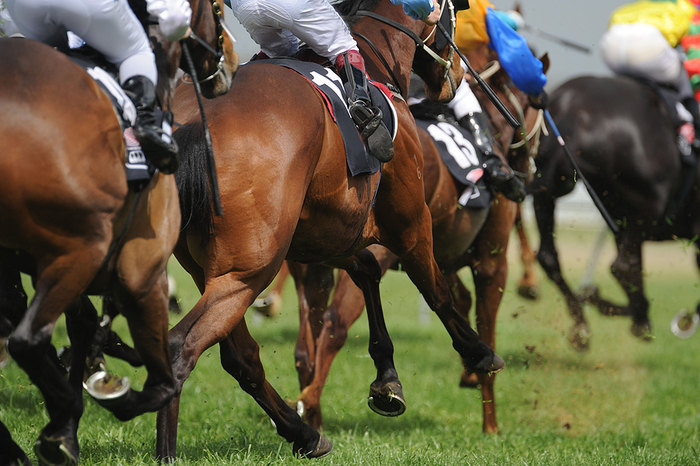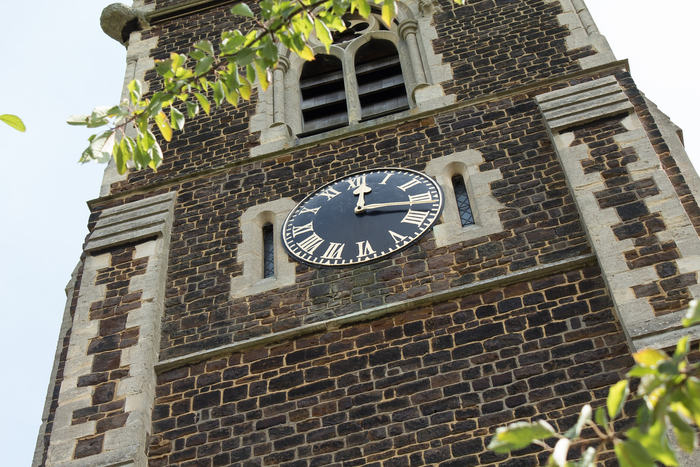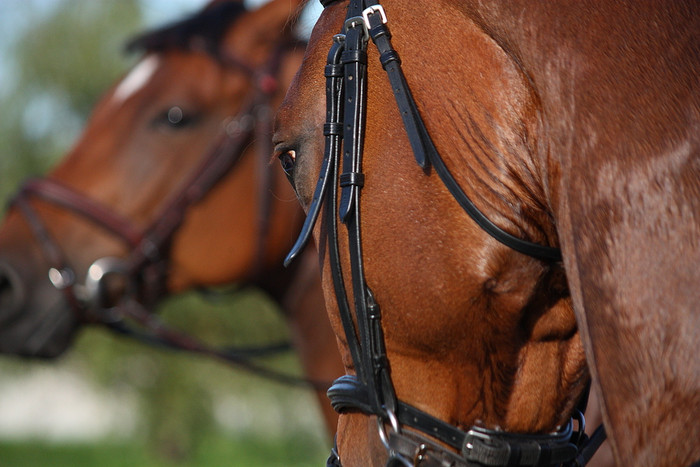 The sport of horse racing in the UK is broadly split into two disciplines, namely those of Flat and National Hunt (Jumps) racing. The task of differentiating between the two should be a relatively straightforward task for even the most inexperienced of racing fans, but for those who do like to see the obvious stated; the principal distinction is of course that Jumps races feature obstacles which need to be jumped, whilst Flat races don’t.
The sport of horse racing in the UK is broadly split into two disciplines, namely those of Flat and National Hunt (Jumps) racing. The task of differentiating between the two should be a relatively straightforward task for even the most inexperienced of racing fans, but for those who do like to see the obvious stated; the principal distinction is of course that Jumps races feature obstacles which need to be jumped, whilst Flat races don’t.
However, the different categorisations don’t quite end there, at least not on the Jumps side of the game anyway. There are in fact three types of contest housed under the National Hunt umbrella; Bumpers, Hurdles and Chases – or Steeplechases to give them their full title. So how to tell which is which?
Officially titled National Hunt Flat races, Bumpers are essentially flat contests held under the rules of National Hunt Racing, and are so immediately identifiable due to the distinct lack of obstacles. The hurdling and steeplechasing categories are then defined by the type of barrier featured during the event. No prizes for guessing that Hurdles races do in fact feature obstacles known as hurdles, whilst in Chases the barriers to be safely negotiated are referred to fences. But what exactly are the differences between the two?
Key Features
| Hurdle | Fence | |
|---|---|---|
| Minimum height | 3.5ft | 4.5ft |
| Material/Construction | Made from a series of linked wooden panels containing brush. | Wooden Frame, filled with tightly bound natural or artificial birch. |
| Characteristics | Flexible, will give way when hit. | Very sturdy, will not give way. More punishing to jumping errors. |
Looking at the information in the above table, it is pretty clear that in the world of National Hunt racing it is the fence, and not the hurdle, which represents the ultimate jumping challenge. The significant height difference of course increases the difficulty, but it is the greater rigidity which really defines a fence.
Due to their more flexible nature, runners will often get away with an error at a hurdle and in fact you will often see horses virtually ploughing straight through them. Fences however aren’t anything like so forgiving. A substantial blunder over the larger obstacles is much more likely to at least deal a major blow to the horse’s winning chance, if not ending their participation in the race entirely, and sadly sometimes their career or even life.
Hurdle Races vs Steeplechases

Due to the considerable variation in jumping ability required to tackle a hurdle in comparison with that needed to negotiate a fence, it is no surprise to learn that Hurdles and Steeplechases attract National Hunt performers with differing attributes, and/or at different stages of their racing careers. So where does each type of race sit on the racing spectrum?
Hurdles Races
Hurdles contests take place over a minimum trip of 2m and feature at least eight flights of hurdles for the first two miles, and four for each subsequent mile. Any event at 3m or beyond is referred to as a Stayers’ Hurdle.
Types of Horses
Looking at the type of runner, it is in hurdles contests that we are likely to get our first glimpse of those horses just setting out on their National Hunt careers. Being far easier to negotiate than fences, hurdles are ideal in helping horses to learn their trade – both in improving their jumping technique, and in gaining confidence in tackling obstacles at race pace.
Being the first step on the jumping ladder, it follows that it is the younger performers who tend to compete over hurdles. Three year olds may take part in juvenile contests, with the other types of event most commonly being open to runners aged four and older. Overall, these races tend to be an attractive option both for horses bred specifically for a career over jumps, and to those former flat runners who are making the switch to National Hunt.
A Stepping Stone or a Career
National Hunt horses commonly spend at least a couple of seasons competing over hurdles, firstly in Novice races, before then moving into open company. It is after this second season that runners will often make the switch to chases, should connections opt to go down that route. Others however may remain over hurdles for the duration of their careers, possibly as a result of a lack of size or jumping aptitude, or simply due to the fact that they excel over the smaller obstacles. It should also be noted that having switched from hurdles to chases, runners are perfectly entitled to switch back again.
Quicker Races
One final observation in regard to hurdling events is the quicker pace of the races in comparison to their chase counterparts. Due to the obstacles being lower in height than fences, runners are more able to maintain their momentum when tackling hurdles, with the very best exponents possessing a low and efficient jumping style, often barely seeming to clear the top of the obstacle. With hurdles races typically shorter too, this further enhances their suitability to horses blessed more with speed than stamina.
Steeplechases (Chases)
As mentioned, many runners do stay over the smaller obstacles, but for others a career over fences beckons. This move is partly fuelled by the jumping aptitude of the horses, and partly by the greater riches and glory available in chase events, which on average offer higher levels of prize money than hurdle races.
Open to runners aged five and older, Steeplechases not only feature more formidable obstacles, they also have more of them, with a minimum of 12 fences over the first two miles of a race and a further six per mile thereafter. Race distances in chase events range from a minimum of 2m all the way up to the stamina-sapping 4m2½f of the Grand National, the most famous and iconic chase of them all.
Fence Types
Other than the minimum 4½ft height stipulation highlighted earlier, all fences on a standard chase course must also consist of the same type of material or mixture of materials, i.e. if one fence is made solely of birch, then all fences must be made solely of birch. One fence a mixture of birch and spruce? Then all fences on that course must be a mixture of birch and spruce.
So far when speaking of fences, we have been referring to the type of plain fence which accounts for the majority of obstacles witnessed on UK racetracks. There are however two further types of fence which are a common sight in chase contests, both in the UK and in Ireland. Barriers known as open ditches and water jumps are permitted to feature alongside plain fences, with the proviso that they must not be the first obstacle tackled during the race. But what exactly do these types of fences consist of?
Open Ditch: An open ditch is a plain fence which is preceded by a ditch on the take-off side, thus requiring the runners to begin their jump earlier than would be the case at a standard plain fence, and so increasing the difficulty of the obstacle.
Water Jump: Water Jumps are often the most visually spectacular of the fences, due to the splashes generated by the three inches of water on the landing side. With a minimum height requirement of only 3ft, as opposed to the 4½ft of a standard fence, they are also amongst the least demanding.
Which Came First, The Hurdle Or The Fence?

These days the modern National Hunt racehorse is most likely to tackle a hurdle before being faced with a fence, but going back through the history books it is steeplechasing which appears first. Rooted in the Irish cross country “pounding matches”, in which runners would race to a standstill, modern steeplechasing takes its name from the early practice of racing from church steeple to church steeple – first recorded in a 1752 event rom St John’s Church to St Mary’s Church in Country Cork.
Runners racing over open land and tackling obstacles such as streams and stone walls, as they did in those early days, is of course a far cry from the modern version of the sport. However, it wasn’t too long until steeplechase events were being held in a more organised form at a dedicated racecourse. Reports of such meetings date from as early as 1807 over in Ireland, with the first event in the UK coming slightly later at Bedford in 1810.
The First Hurdle Races
Turning to racing over hurdles, the origins of this version of National Hunt racing seem to date back to the practice of racing horses over sheep hurdles first reported in the Brighton area in 1808. Quickly recognised as being an ideal way in which to prepare runners for a future steeplechasing career, this form of jumps racing wasn’t long in gaining in popularity, with the first recorded contest at the track coming at Durdham Down near Bristol in 1821.
Not too much in it overall then, but the history books would suggest that chasing, at least on a recognised racecourse, predates hurdling by around a decade – and a little longer than that if we hark back to those church steeple and sheep hurdle origins.
Biggest Hurdle and Steeplechase Races

Whether you prefer the speed and accuracy of hurdles events, or the spectacle of the top chasers taking flight over the fences, the British racing programme has plenty to offer. Top class Graded contests from both spheres are peppered throughout the season, including some of the very biggest events in the sport.
Biggest Hurdle Races
Champion Hurdle: The single biggest hurdles race of the season, and the feature contest on the opening day of the Cheltenham Festival. A Grade 1 event, the Champion Hurdle sees the cream of the 2m division lock horns, and features all-time greats such as Hurricane Fly, Istabraq and Sea Pigeon on an illustrious roll of honour
Stayers Hurdle: Another feature of the March meeting at Cheltenham, this is the premier event of the season for those hurdlers who boast stamina as their strong suit. Taking place over 3m, the mighty Big Bucks famously landed this race in four consecutive years between 2009 and 2012.
Christmas Hurdle: The festive period is an excellent time to be a racing fan, with a number of highlights on offer; the biggest of which over the smaller obstacles is this Boxing Day treat. Together with the Fighting Fifth Hurdle and Champion Hurdle, the race makes up hurdling’s Triple Crown and annually attracts the top performers in the game.
Biggest Steeplechases
Grand National: The one race which really needs little introduction, even to non-racing fans, and the contest which is without doubt the most famous jumps race held anywhere in the world. Featuring an array of unique obstacles and a marathon trip of 4m2½f, Aintree’s April extravaganza is a race unlike any other.
Cheltenham Gold Cup: The Grand National may be the most popular staying chase of the season, but it is not the classiest. That honour belongs to the showpiece contest of the Cheltenham Festival, the magnificent Gold Cup. A Grade 1 event over 3m2f, this event lights up the concluding Friday at the meeting and has been landed by greats of the game such as Kauto Star, Best Mate and Arkle.
Queen Mother Champion Chase: Whilst the Grand National and, to a slightly lesser degree, Cheltenham Gold Cup place the emphasis upon stamina, for those who like to see the top performers in the sport tackling their fences at speed, it is this Day 2 Cheltenham Festival feature which is the highlight of the season. Won by the likes of Altior, Master Minded and Sprinter Sacre, this is the race in which to see the superstars strut their stuff.
Grand National & Cross Country Fences

Being able to recognise the difference between a hurdle and a fence is certainly handy when viewing a National Hunt contest, but standard hurdles and plain fences aren’t quite the end of it when it comes to National Hunt jumping challenges. We have already touched upon open ditches and water jumps, but there are also other, far more unusual, obstacles out there.
Aintree Grand National Fences
The most famous of these out of the ordinary fences of course feature on the Grand National Course at Aintree, with the likes of the imposing Becher’s Brook, Valentines and The Chair now ingrained in sporting culture. However, whilst these National fences are larger and more spectacular than normal, they do resemble a standard fence to a degree, in that they are at least constructed from a combination of spruce and birch.
Cross Country Fences
For the truly wacky obstacle, we need to turn to the world of the Cross Country Chase – the most prestigious of which comes in the shape of the Glenfarclas Cross Country Chase at the Cheltenham Festival. Do not let the word “chase” mislead you into expecting a succession of plain fences here, as the obstacles to be tackled during this, and other, Cross Country events, are just a little out of the ordinary.
Rather than the usual birch/spruce ensembles, Cross Country competitors will instead be tasked with safely negotiating white timber rails, steep up and down banks, triangular obstacles known as “cheese wedges” and hedges, lots of hedges, many of which are actually growing out of the course. Throw in a Grand National style fence and a couple of plain obstacles and you have racing’s most unique jumping challenge. Such races require brilliant jumping, bags of stamina and a good degree of flexibility and character too.
